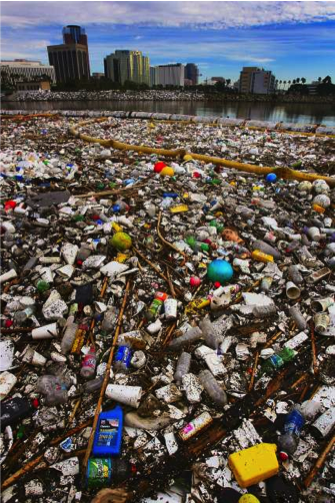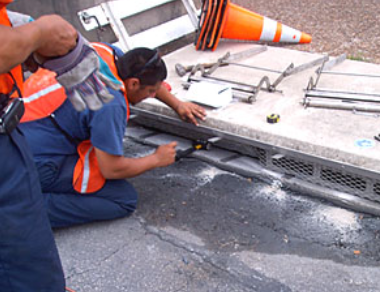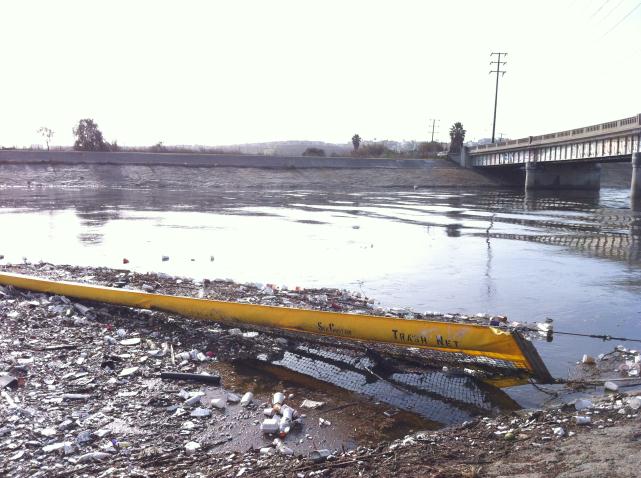Zero Trash
Using the Clean Water Act to Control Marine Debris in California
This post is cross-posted on EcoPerspectives, the environmental law and policy blog of the Vermont Journal of Environmental Law.
Let’s talk trash.
Human-generated stuff that ends up in the ocean, termed “marine debris” or “marine trash,” presents a critical ocean and coastal management challenge. Trash can be found on coastlines and in seawater worldwide, from the surface to the seafloor. Marine trash degrades habitats, and harms and kills wildlife. Plastic trash, in particular, may persist for centuries or longer in the ocean, where it can absorb harmful contaminants and contaminate the environment with chemical additives. The economic costs of marine trash are alarming, too. West Coast communities alone spend over $520 million annually on prevention and clean-up.
Despite what one might initially think, marine trash is, to a significant extent, a terrestrial problem. Some estimates suggest that most marine trash derives from land. Urban stormwater is a key pathway. Inevitably, municipal solid waste collection fails to capure all trash. People litter. Wind blows waste out of landfills. Industrial sites experience spills. And during the next rainstorm, water gushes along the impervious pavement of cities, carrying this trash with it into ocean-bound sewers and waterways.
Reducing trash pollution in stormwater is thus critical to addressing marine trash. The Clean Water Act, the nation’s principal water quality statute, regulates stormwater discharges; but using the Act to control trash in municipal stormwater systems is a fairly recent innovation. Los Angeles is leading the way. Using the Clean Water Act tool of Total Maximum Daily Loads (TMDLs), the L.A. Region has implemented the nation’s largest trash-capture initiative. Now, the State of California is pioneering a statewide trash policy that builds upon local successes.
What are TMDLs?
The Clean Water Act requires states to set Water Quality Standards for each waterbody. Water Quality Standards designate uses for the waterbody (e.g., recreation, wildlife habitat) and set criteria necessary to protect those uses. A waterbody is “impaired” if a pollutant (e.g., trash) prevents attainment of its Water Quality Standards. Stormwater is a common cause of impairment.
To address impairment, regulators must develop a TMDL specifying the maximum amount of the pollutant that the impaired waterbody can assimilate without violating its Water Quality Standards. Dischargers must take corresponding action to reduce pollution so as not to exceed the TMDL.
To implement the TMDL, regulators incorporate mandatory pollution-reduction measures into Clean Water Act discharge permits (e.g., local stormwater permits), as well as any relevant state and local plans. Stormwater control measures take the form of “best management practices” (BMPs), which can include structural retrofits as well as operational or behavioral changes.
L.A.’s’ “Zero Trash” TMDL

Los Angeles has serious trash-pollution problems, as demonstrated by the below L.A. Times photo of the Los Angeles River mouth. Los Angeles County’s municipal separate storm sewer system (MS4) carries untreated stormwater—and the trash that washes off of city streets with it—into the ocean-bound L.A. River.
In the late 1990s, the L.A. Regional Water Board listed the L.A. River as impaired due to trash, compelling regulators to develop a Trash TMDL for the watershed. Baseline monitoring studies concluded that stormwater runoff was the dominant source of trash. Because even a single Styrofoam cup can have lasting, harmful impacts on beneficial uses, regulators essentially had no choice but to set the numeric target for trash in the L.A. River at zero and require the MS4 to implement trash-control measures. The State Water Board and U.S. Environmental Protection Agency approved the TMDL in 2002.
Local governments balked at the idea that they could be responsible for every piece of litter. Twenty-two cities sued to set aside the TMDL, arguing that zero trash is an impossible and overly expensive standard. The California Court of Appeal disagreed in City of Arcadia v. State Water Board, 135 Cal. App. 4th 1392 (2006), noting a variety of viable compliance measures to attain the zero-trash goal and validating regulators’ use of scientific data.
In 2008, the L.A. River Trash TMDL took effect. Its mandates are incorporated into the stormwater permits of Los Angeles County, forty-two cities, and the California Department of Transportation. The TMDL requires permittees to reduce trash 40 percent below a calculated baseline in the first compliance year, and an additional 10 percent each year thereafter. Months of negotiation led regulators and local governments to agree on two compliance pathways.
 First, permittees may install “full capture devices” throughout their storm-drain system. A full capture device captures all particles less than or equal to 5mm in diameter during a typical storm. Although such devices fail to keep out very small particles, a finer mesh would easily clog, increasing flood risk.
First, permittees may install “full capture devices” throughout their storm-drain system. A full capture device captures all particles less than or equal to 5mm in diameter during a typical storm. Although such devices fail to keep out very small particles, a finer mesh would easily clog, increasing flood risk.
Alternatively, permittees may install “partial capture devices” in tandem with implementing institutional controls such as enhanced enforcement of litter laws and increased street sweeping. Partial capture catch-basin inserts are the least expensive structural retrofit, but the accompanying institutional controls can be labor-intensive. For instance, cities must conduct studies to understand trash sources, land uses, and dem ographics, and continually monitor and adjust strategies.
ographics, and continually monitor and adjust strategies.
In spite of challenges, the region as a whole has been surpassing its obligations. Stormwater improvements in the City of L.A. alone have prevented more than 1.2 million pounds of trash annually from entering waterways and reduced trash inputs to the L.A. River by more than 69 percent. Compliance with the L.A. River TMDL and other L.A.-area trash TMDLs has resulted in the installation of nearly 100,000 full capture devices and numerous “trash booms” that capture trash at outfalls. Furthermore, L.A.-area cities have developed expertise in mitigating stormwater and marine trash, helping to pave the way for other jurisdictions seeking to reduce pollution. Regional compliance with Trash TMDLs costs on average $5.3 per resident per year above and beyond what California communities otherwise spend on trash control (55 percent greater).
Expanding Statewide—and Beyond
The State of California is in the process of developing a statewide trash policy that builds upon Los Angeles’ efforts. The final policy, expected soon, will provide regulatory consistency by incorporating zero-trash control measures into discharge permits for state agencies, industry, construction sites, and MS4s throughout California, focusing on high trash-generating land uses.
Simultaneously, the State and local governments are pursuing complementary policies to close the gap between product generation and post-consumer recovery. California recently adopted the first state law banning single-use plastic bags, a commonly littered item. California also regulates plastic-pellet spills and offers a cash incentive for beverage-container recycling. Future policies could motivate producers to incorporate life-cycle considerations into product design, production, and sale. Policies that shift financial responsibility for marine-trash management upstream—for instance, requiring producers to contribute to financing Trash TMDL compliance—could help incentivize greener product alternatives as well as ease governments’ financial burdens.
Beyond the L.A. River, regulators have implemented Trash TMDLs in fourteen other L.A.-area watersheds, the Colorado River Basin, and Maryland’s Anacostia River Watershed. Other jurisdictions seeking to control trash-polluted stormwater can draw valuable lessons from these experiences. California’s forthcoming trash policy will offer an even broader model for stormwater trash control, further expanding our collective expertise about how Clean Water Act tools can be harnessed to address marine trash.








Reader Comments